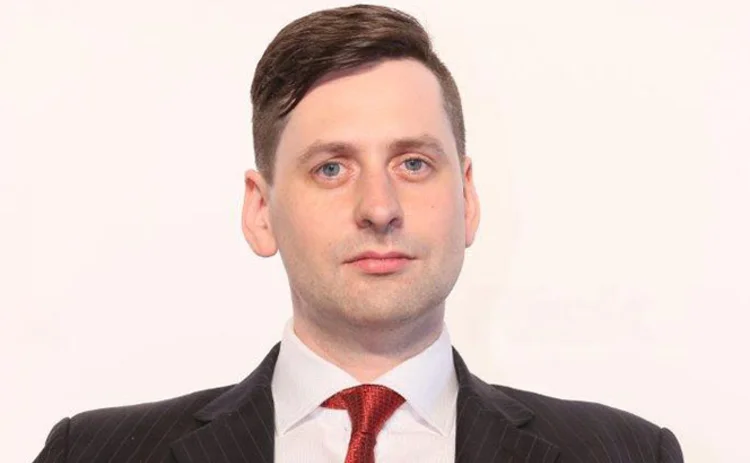
Equity derivatives house of the year: Credit Suisse
Innovative product development and risk recycling power bank to record year

Structured Products Asia Awards 2016
The past 12 months have been a game of two halves for issuers across Asia-Pacific markets. The dislocations that followed the China equities crash in the third quarter of 2015, and again in January 2016, sparked a period of heavy trading on equities underlyings, followed by a slump in volumes and new business.
Credit Suisse made the most of the feast, and the bank has also ridden out the famine, at a time when other dealers have retrenched dramatically. Though it declines to give firm numbers, 2015 was comfortably a record for Apac equity derivatives revenues, it says, with the franchise making a very weighty contribution to overall Apac revenues. Though volumes are down dramatically across the street for 2016, especially for popular products such as autocallables – which depend on steady growth to deliver maximum returns – the bank is confident it is well positioned to make the most of the recovery.
"Last year was a record for our Apac equity derivatives business – not just a record for us, but for any bank, we believe. This year has obviously been slower. Sentiment is weak, and existing structures have not been calling, so people have been cautious about putting more money in. But we've still managed to grow our share in core markets such as Japan and Hong Kong, even as others retrench," says Charles Firth, Hong Kong-based head of equity derivatives structuring for Asia-Pacific at Credit Suisse.
In line with its peers in the US, the bank's Asia-Pacific team is wise to potential regulatory-driven shifts in its group-wide funding mix. It has already begun the process of shifting its regional issuance domicile to Singapore, says Hong Kong-based Ross Hellaby, who looks after the Asia-Pacific equity derivatives platform for Credit Suisse.
Last year was a record for our Apac equity derivatives business – not just a record for us, but for any bank, we believe
Charles Firth, Credit Suisse
"We're looking at novating most of our Asian business into our Singapore branch entity. That will be the structured note issuance entity going forward. The main advantage is on the funding side: we can sometime squeeze better funding out of those entities, and can recycle the funds those sales generate more easily," he says.
Japan has been a core focus for the bank once again, both for flow products and bespoke solutions for the country's vast insurance providers. Credit Suisse has maintained its dominant share of Japanese private placement products by nursing clients through a choppy period for the country's equity markets.
"After Nikkei volatility spiked last year, we saw a trend among Japanese investors away from single-asset underlyings to worst-of-two structures, whether uridashi or private placement. That adds some risk, but by setting the knock-in barriers relatively low, we were able to get people comfortable enough to keep investing," says Firth.
Japan variable annuities
The bank also made a dramatic entry into the variable annuities (VA) space in 2015, the germination of lengthy discussions with the Dai-ichi Frontier Life (DFL) Insurance company – the country's largest provider of VAs – for whom it helped design a bespoke VA that has already sold in excess of $3 billion.
The trade – a target-redemption style VA – was notable in several ways. In a traditional VA structure, all the money that buyers cumulatively pay in would be managed in one pot by a bank or third-party provider. But with Japanese rates sliding inexorably lower, that model has become uneconomic: dealers estimate the fair value cost of hedging the interest rate risk on a VA at 3% per annum.
Instead, Credit Suisse proposed splitting the policyholders' cash into two pots: one general account, in which the insurance company placed bonds to protect the product's income; and a special account designed to generate returns, managed by the bank. For the special pot, it designed a multi-asset strategy across equities and bonds, using its own bespoke index product.
But the more noteworthy innovation, says Firth, came on the pricing side. In order to better smooth its cashflows, DFL wanted to break up its policyholders into blocks, rather than managing them in one lump. If there are still active policyholders in one block, the insurer knows it will need to keep paying out on it, and hence set aside cash for the purpose.
"Previously, there was a 1:1 hedge. Now, the number of active policyholders doesn't directly affect cashflows; it's just a case of whether block is active or not. All the risk management complexity sits with us," says Firth.
DFL says it was exceptionally pleased with the result; a second product followed in the second quarter of this year.
"We chose to work with Credit Suisse owing to [their] competitive pricing and strong understanding of the dynamics of variable annuity products. By having all its operations based in Asia, the bank is able to be very reactive to any request... giving an advantage compared to the competitors," says Hiroshi Koyama, Tokyo-based head of product development in the asset and liability management department at DFL. "Their Tokyo team provides superior support to their Japanese clients."
Thanks to the two deals, the bank now boasts the biggest share of the Japanese VA market, albeit in a climate where overall volumes have fallen from historic highs over the past couple of years.
Risk analytics
Key to its ability to deliver on the project was the firm's advanced risk management suite – internally dubbed 'the Zoo'. Using the grid-based computing power of its trading and risk analytics platform within the suite – known as Giraffe – the bank was able to crunch the numbers and get comfortable with the hedging that would be required to support the block-by-block approach, says Firth.
"The pricing-by-blocks element is the trickiest part, which was something unique in this context. The complexity that adds to the booking structure cannot be overstated; it is exponentially more difficult to compute. If you price a VA by individual policyholder, you essentially have a large spreadsheet of all the names – anywhere from 20,000 to 50,000 – and look at all their variables, which you have to follow over the life of the product."
The bank sees Giraffe is an integral part of the success of its equity derivatives franchise, powering its risk-recycling engine – which in turn underpins its vast regional flow businesses. The bank's confidence in its risk management function is critical to its ability to keep quoting in choppy markets, says Firth.
At the end of 2015, it finished migrating all of its trading books onto Giraffe.
"More than anything else, that's helped us drive down costs. We used to have multiple Excel-based risk management systems, which served their purpose well but were pretty clunky. It's been a big enabler to do new types of business – ticket sizes as low as $20,000 are an obvious feature of that," says Hellaby.
The bank's clients say service provision has remain solid this year, at a time when others have retrenched, or stopped quoting during choppy markets: "For flow products, they are our top counterparty," says a senior executive at one of the region's largest private banks.
Clients also praise the bank for staying on top of changing regulatory demands across different markets: "For the type of products we trade, we need a lot of documentation to comply with increasingly complex regulatory requirements. Credit Suisse offer us the best experience here – they can provide us with the required documentation at speed and mistakes are very rare," says a senior executive at a Taiwanese asset manager.
Only users who have a paid subscription or are part of a corporate subscription are able to print or copy content.
To access these options, along with all other subscription benefits, please contact info@risk.net or view our subscription options here: http://subscriptions.risk.net/subscribe
You are currently unable to print this content. Please contact info@risk.net to find out more.
You are currently unable to copy this content. Please contact info@risk.net to find out more.
Copyright Infopro Digital Limited. All rights reserved.
As outlined in our terms and conditions, https://www.infopro-digital.com/terms-and-conditions/subscriptions/ (point 2.4), printing is limited to a single copy.
If you would like to purchase additional rights please email info@risk.net
Copyright Infopro Digital Limited. All rights reserved.
You may share this content using our article tools. As outlined in our terms and conditions, https://www.infopro-digital.com/terms-and-conditions/subscriptions/ (clause 2.4), an Authorised User may only make one copy of the materials for their own personal use. You must also comply with the restrictions in clause 2.5.
If you would like to purchase additional rights please email info@risk.net
More on Awards
Clearing house of the year: LCH
Risk Awards 2025: LCH outshines rivals in its commitment to innovation and co-operation with clearing members
Best use of machine learning/AI: CompatibL
CompatibL’s groundbreaking use of LLMs for automated trade entry earned the Best use of machine learning/AI award at the 2025 Risk Markets Technology Awards, redefining speed and reliability in what-if analytics
Markets Technology Awards 2025 winners’ review
Vendors jockeying for position in this year’s MTAs, as banks and regulators take aim at counterparty blind spots
Equity derivatives house of the year: Bank of America
Risk Awards 2025: Bank gains plaudits – and profits – with enhanced product range, including new variants of short-vol structures and equity dispersion
Law firm of the year: Linklaters
Risk Awards 2025: Law firm’s work helped buttress markets for credit derivatives, clearing and digital assets
Derivatives house of the year: UBS
Risk Awards 2025: Mega-merger expected to add $1 billion to markets revenues, via 30 integration projects
Interest rate derivatives house of the year: JP Morgan
Risk Awards 2025: Steepener hedges and Spire novations helped clients navigate shifting rates regime
Currency derivatives house of the year: UBS
Risk Awards 2025: Access to wealth management client base helped Swiss bank to recycle volatility and provide accurate pricing for a range of FX structures








